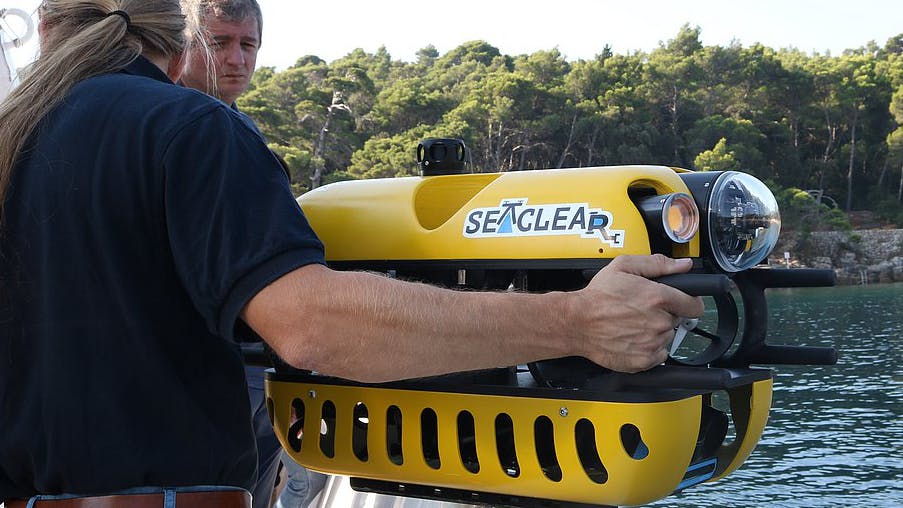
Autonomous Robots Cleaning the Ocean
from hackster.io
The accumulation of garbage in the world’s oceans is a big problem, with an estimated 26 to 66 million tons of waste located in these bodies of water. This trash is harmful to wildlife, such as the loggerhead sea turtles that mistake plastic bags for their favorite snack — jellyfish.
Albatrosses, seals, and many other marine animals are similarly at risk either because they mistake the garbage for food, or due to issues with entanglement. As you might expect, considering the scope of the problem, there are a number of efforts underway to remove this waste from the ocean. Due to the difficulties associated with collecting underwater trash, most of these efforts focus on collecting surface trash.
While helpful, considering that 94% of ocean waste is located on the seafloor, these surface-focused efforts are not sufficient to solve the problem. Researchers at the Technical University of Munich, and several other European partner institutions, are currently developing an approach to collect underwater garbage through the SeaClear Project.This project employs several autonomous vehicles, and machine learning methods, to scour the sea for trash and clean it up.
A total of four robots work together to achieve the goal of removing ocean waste. Initially, an autonomous surface vehicle performs a scan of the ocean floor. It seeks out large pockets of litter, and upon finding them, sends an underwater observation robot down below the surface to collect additional information and close-up images of the sea floor.
If the water is clear enough, an aerial drone is then launched to localize any further pockets of garbage that have escaped the other vehicles. This data is all combined to provide a fourth robot, the collection vehicle, with a detailed map, which it uses to track down and collect the garbage. This robot has a large gripper that it can use to pick up trash for onboard storage before being towed to shore by the autonomous surface vehicle.
Navigation below the surface of the water presents some challenges not seen on land. Underwater currents, for example, can throw an autonomous vehicle far off course, and prevent it from locating, and navigating to, the predetermined destinations. To overcome these problems, the SeaClear team turned to machine learning, which was able to factor in the otherwise unpredictable ocean currents and get the robots back on track.This was not an easy task, because the amount of compute power available onboard the vehicles is minimal due to both power and space constraints. The researchers needed to develop algorithms that were able to produce highly accurate predictions, with a minimal amount of data and computational resources.
While the project is still under development, the team expects to be able to detect 80% of underwater trash, and collect 90% of it, when the system is fully operational. Initial trials in clear water show that the project is on track to achieve its goals, and further trials are planned to help refine their vehicles and algorithms.



Leave a comment